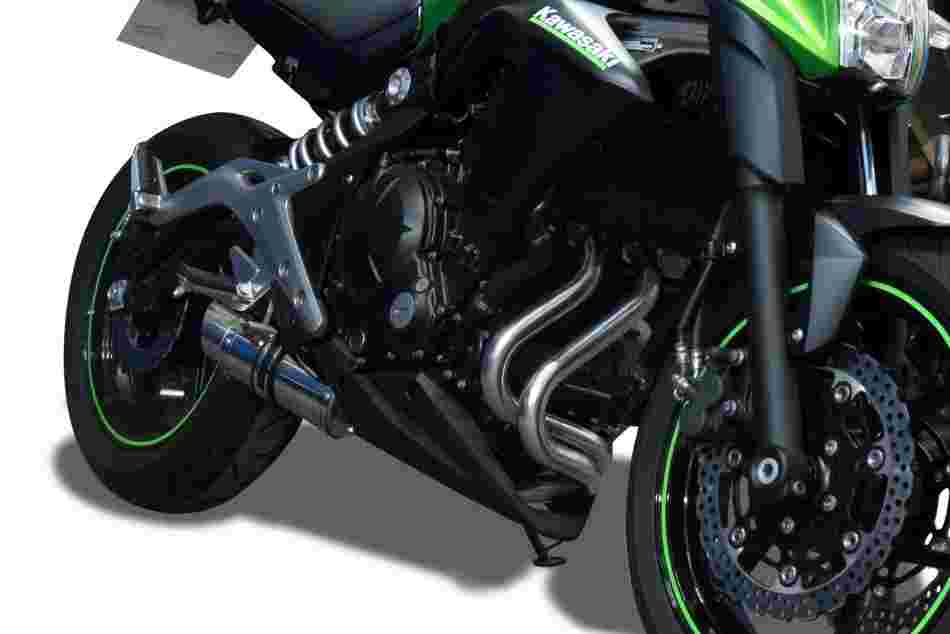If you're a proud owner of the Kawasaki Ninja 650, you already know it's a versatile sportbike built for both daily commutes and thrilling weekend rides. But if you're looking to unlock even more performance and bring out that aggressive growl from your parallel-twin engine, upgrading your exhaust is a great place to start. One brand that consistently ranks among rider favorites is Delkevic. In this guide, we’ll explore the top Delkevic exhausts for the Ninja 650, diving into their features, benefits, and how they can boost both power and sound.
Why Choose a Delkevic Exhaust?
Before we jump into specific models, it’s worth understanding why Delkevic has earned such a loyal following in the motorcycle world. Known for their high-quality materials, easy installation, and competitive pricing, Delkevic offers exhausts that cater to riders seeking both performance and aesthetic upgrades.
Key Advantages of Delkevic Exhausts:
-
Lightweight construction (usually stainless steel or carbon fiber)
-
Increased horsepower and torque
-
Aggressive sound profile
-
Street and track suitability
-
Bolt-on simplicity – no major modifications needed
These features make Delkevic a top choice for Ninja 650 owners wanting a noticeable upgrade without breaking the bank.
Best Delkevic Exhausts for the Ninja 650
Let’s explore the top Delkevic exhaust systems and slip-ons that are highly compatible with and popular among Ninja 650 riders.
1. Delkevic 13” Tri-Oval Stainless Steel Full System
Overview:
This full exhaust system includes headers, mid-pipe, and a 13” tri-oval muffler. Designed for maximum performance gains, this system is ideal for riders who want more than just a sound upgrade.
Features:
-
Polished stainless steel for corrosion resistance
-
Large tri-oval muffler offers a deeper tone
-
Noticeable weight reduction from stock
-
Includes baffle (removable for extra volume)
Performance & Sound:
This system provides a noticeable increase in mid-range torque and horsepower. With the baffle in, it delivers a throaty yet refined exhaust note. Remove it, and your Ninja 650 roars to life with an aggressive growl that commands attention.
2. Delkevic 8” Carbon Fiber Slip-On Exhaust
Overview:
For those who prefer a slip-on option that doesn’t require full header replacement, the 8” carbon fiber slip-on is a sleek, lightweight upgrade that transforms both the look and sound of your Ninja 650.
Features:
-
Carbon fiber finish for a race-inspired look
-
Compact and lightweight
-
Straightforward installation
-
Removable baffle for sound tuning
Performance & Sound:
While it won’t offer the same performance gains as a full system, this slip-on significantly reduces weight and improves throttle response. Sound-wise, it delivers a sharper, more aggressive tone without being obnoxiously loud—perfect for everyday riding with flair.
3. Delkevic 14” Oval Stainless Steel Slip-On
Overview:
If you’re after a balance between performance, sound, and style, the 14” oval stainless slip-on is a solid middle-ground option.
Features:
-
High-grade stainless steel
-
Slightly larger profile for a smoother tone
-
Easy installation
-
Great value for money
Performance & Sound:
You’ll notice a modest increase in power, especially in the low-to-mid RPM range. The longer muffler size results in a deeper, fuller sound compared to shorter options. It’s ideal for riders who want a sportier note without excessive volume.
4. Delkevic 9” Stubby Carbon Fiber Slip-On
Overview:
If minimalism and aggression are your goals, the 9” stubby carbon fiber slip-on checks all the boxes.
Features:
-
Compact design
-
Weighs significantly less than OEM
-
Real carbon fiber finish
-
Aggressive and sharp exhaust tone
Performance & Sound:
The shorter length of this muffler delivers a louder, more race-oriented sound. Ideal for riders who want to be heard, the stubby design also adds a sharp visual punch to the Ninja 650’s rear profile. However, it may not be the best choice for noise-sensitive areas.
Things to Consider When Choosing a Delkevic Exhaust
Not all exhausts will suit every rider. Here are a few things to keep in mind when selecting a Ninja 650 Delkevic exhaust:
Street Legality:
Some Delkevic exhausts may exceed local noise limits if the baffle is removed. Always check your area’s regulations.
Installation:
Most Delkevic systems are designed for easy bolt-on installation using basic tools. However, full systems may require more time and mechanical knowledge.
Tuning:
While most slip-ons don’t require a fuel remap, full systems may benefit from ECU tuning to maximize performance gains and prevent lean conditions.
Budget:
Delkevic offers great value, but prices vary based on material (carbon fiber vs. stainless steel), system type (full vs. slip-on), and muffler length.
Benefits of Upgrading Your Ninja 650 with a Delkevic Exhaust
Upgrading your exhaust isn’t just about aesthetics or sound—there are real-world performance advantages:
1. Weight Reduction:
Most stock Ninja 650 exhausts are relatively heavy. Delkevic systems shed significant weight, improving acceleration and handling.
2. Enhanced Sound:
The stock Ninja 650 is known for its quiet and tame exhaust note. A Delkevic exhaust unleashes a more aggressive and enjoyable tone.
3. Improved Performance:
With better exhaust flow, you can see increases in horsepower and torque, especially with a full system and proper tuning.
4. Custom Style:
With a variety of finishes and sizes, Delkevic lets you personalize your Ninja 650’s look and sound.
Conclusion: Which Delkevic Exhaust is Right for You?
Whether you’re chasing power, a better sound, or a sleek new look, there’s a Ninja 650 Delkevic exhaust for every type of rider. For full performance upgrades, the 13” tri-oval stainless full system is a top-tier choice. If you prefer a slip-on for its simplicity, the 8” carbon fiber or 14” oval stainless models offer excellent value and great sound.
Ultimately, the best choice depends on your riding style, budget, and personal taste. One thing is certain: upgrading to a Delkevic exhaust will transform your Ninja 650 into a machine that sounds as good as it looks—and performs even better.




